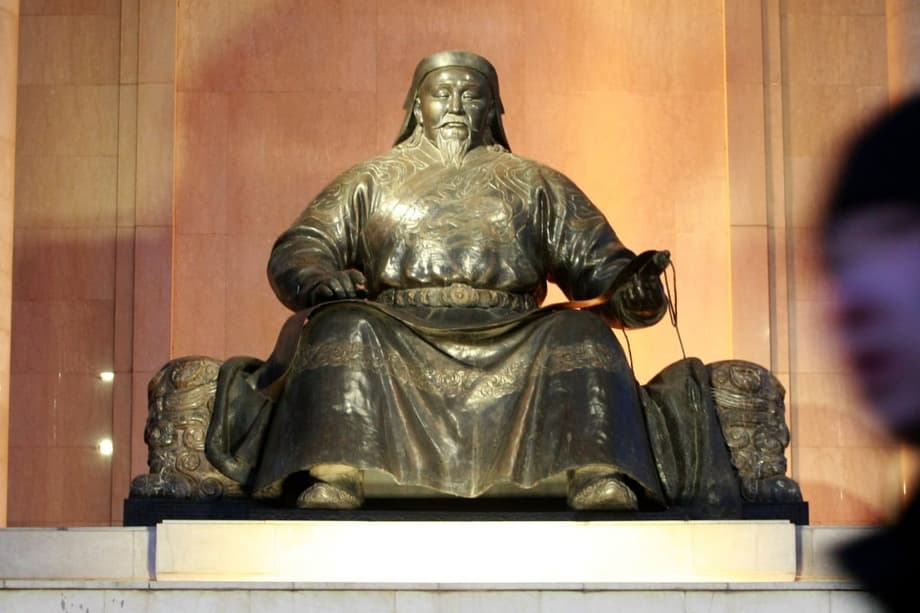A conquest that remade the Middle Kingdom
The fall of the Southern Song on the waters off Yashan in 1279 ended centuries of Chinese dynastic rule by native elites and set the stage for a sweeping transformation. Kublai Khan, grandson of Genghis Khan, had already proclaimed a new dynasty in 1271, adopting the Chinese dynastic name Yuan to signal legitimacy and continuity within Chinese political tradition. His victory completed the conquest and unified China under a foreign ruler for the first time. What followed was not only a change of court and capital, but a recalibration of how power, trade, knowledge, faith, and art moved across Eurasia.
- A conquest that remade the Middle Kingdom
- How Mongol rule reshaped governance
- Trade routes, money, and a connected economy
- Cities, roads, and the Grand Canal
- Religion, language, and a cosmopolitan court
- Arts in a time of occupation
- Diplomacy and the Eurasian network
- Why the Yuan fell and what endured
- Highlights
From his new capital at Dadu, on the site of present day Beijing, Kublai assumed the rituals and language of Chinese emperorship. He claimed the Mandate of Heaven, honored Chinese statecraft, and built a centralized regime that blended steppe traditions with Chinese bureaucratic practice. At the same time, the Yuan remained part of a sprawling Mongol world that stretched from the Pacific to the Mediterranean. The Silk Road and maritime routes surged with caravans and ships carrying people, goods, and ideas between China, Central Asia, the Islamic world, and Europe.
Contemporaries saw both devastation and reinvention. A thirteenth century Persian official, Ata Malik Juvaini, chronicled the shock felt across Asia as the Mongols shattered old orders and stitched together new ones.
With one stroke a world which billowed with fertility was laid desolate, and the regions thereof became a desert, and the greater part of the living, dead.
Kublai’s court worked to make rule sustainable after the storms of conquest. The Yuan built institutions, channeled grain and taxes to the capital, and positioned China as a central hub in an interlinked Old World. That dual identity, Chinese in form yet Eurasian in reach, is key to understanding how the Yuan changed China.
How Mongol rule reshaped governance
Yuan rulers constructed a centralized state that mixed Mongol preferences with Chinese administrative depth. The khan presided over a powerful court and a web of ministries, secretariats, and provincial offices. Chinese advisers and clerks staffed much of the machinery, yet key posts often went to Mongols or trusted allies from other parts of the empire. This hybrid arrangement created a new balance between conquerors and the conquered.
A new social order
Under the Yuan, society was formally ranked into a four class hierarchy. Mongols stood at the top, followed by semu people, a category that included Central and West Asian communities the Mongols brought east to assist with finance, engineering, and governance. Northern Chinese came next. Southern Chinese, who had resisted the longest under the Song, occupied the bottom rung. This ranking shaped access to office, legal treatment, and opportunity. It gave the conquerors and their cosmopolitan allies privileged roles, while curbing the influence of the traditional scholar gentry.
The system was not rigid in every instance. Some Chinese families rose through service, trade, or expertise. Yet the hierarchy set the tone of Yuan society and reinforced a court wary of Confucian literati whose values could constrain imperial power. That wariness showed up in hiring practices, legal codes, and the reshaping of examinations.
Exams and officials
For centuries the civil service examinations had selected officials through mastery of classical texts. The Mongols suspended the exams during conquest and only reinstated them in 1315. When testing returned, ethnic quotas and restrictions ensured that Mongols and semu groups retained an edge. Many scholar officials received only modest appointments as teachers or local clerks. Others chose reclusion, turning to study, religion, and the arts.
Even with these limits, the Yuan retained key features of Chinese governance: written law, a formal bureaucracy, provincial administration, and a capital centered on imperial ritual. Over time, these institutions would shape the more centralized Ming and Qing states that followed.
Trade routes, money, and a connected economy
Kublai’s government revitalized long distance commerce on both land and sea. Caravans crossed Central Asia under the protection of the Mongol postal and relay network, known for its rapid horse stations and secure lodgings. Chinese silk, ceramics, lacquer, and metalwork traveled west. In return, Islamic science, medicine, textiles, glass, and precious stones flowed east. Merchant communities from Persia and Central Asia settled in China’s ports and cities, while Chinese traders pushed deeper into Southeast Asia and the Indian Ocean.
Paper money and price shocks
One of the most visible economic changes was currency. Paper money had existed in earlier Chinese dynasties, but the Yuan made state issued notes the main tender. Paper eased large transactions and taxes, and it dovetailed with the demands of a continental empire. Early on, the system helped integrate markets. In later decades, repeated over issue and fiscal strain weakened confidence. Shortages of coin and disputes over redemption contributed to inflation. By the mid fourteenth century, the currency crisis amplified social stress and hampered the dynasty’s ability to pay troops and suppliers.
Trade still thrived through the heart of the Yuan period. The court maintained monopolies in salt and other key goods, grain moved in bulk through canals and river routes to the capital, and Chinese ports hosted a mosaic of languages and faiths. The sum was an economy plugged into Eurasian circuits as never before.
Cities, roads, and the Grand Canal
Dadu, the Yuan capital, was planned on a grand grid with wide avenues, walled precincts, and a palace complex that projected power to subjects and visitors alike. The Yuan also maintained a summer capital at Shangdu, known later as Xanadu, which symbolized the court’s steppe roots and love of the open north. Together, these centers expressed the dual identity of a ruling house that honored Chinese forms while remaining true to its origins.
Infrastructure was the spine of Yuan rule. The regime repaired and extended the Grand Canal to carry grain from the Yangtze heartland to the northern capital. Roads and postal relays crisscrossed the realm, enabling rapid communication for officials, couriers, and merchants. Bridges, warehouses, and wharfs supported a logistical system that bound rice fields, markets, and garrisons to the throne in Dadu.
Religion, language, and a cosmopolitan court
Mongol rulers built legitimacy through religious breadth. The court favored Tibetan Buddhism, elevating lamas as advisors and patrons of art and ritual. At the same time, Confucian temples received support, Taoist practice continued, and Islamic and Christian communities worshiped freely in many cities. This pluralism reflected both Mongol tradition and the practical needs of a diverse empire.
Language policy also showed the court’s ambitions. The scholar ‘Phags pa devised a new script for Mongol that the Yuan promoted for imperial use. Chinese, Mongolian, Uighur, Tibetan, Persian, and other scripts appeared in documents, inscriptions, and art. Knowledge moved with languages. Muslim astronomers and physicians served at court, recalculating calendars and sharing methods in anatomy and pharmacy. Chinese artisans borrowed techniques in glass and metal, while Central Asian craftsmen adopted Chinese designs and glazes.
The Venetian merchant Marco Polo, who traveled in Yuan lands in the late thirteenth century, left an account that shaped European views for centuries. He marveled at the scale of the court, the wealth of cities, and the reach of the postal system.
He is the greatest lord that ever was in this world.
Whether or not every detail in his book was precise, Polo captured a truth that struck visitors across cultures. The Yuan court presided over a realm of unusual scope that brought together faiths, tongues, and talents under a formidable state.
Arts in a time of occupation
Paradoxically, a century of foreign rule became one of the most creative in Chinese art. Many scholar officials shut out of high office turned their energy toward painting, calligraphy, poetry, and religion. They valued personal expression and brushwork over meticulous realism. Zhao Mengfu, a brilliant court insider who wrestled with service and integrity, reworked models from earlier dynasties and set a new course for literati art. The Four Masters of the Yuan, Huang Gongwang, Ni Zan, Wu Zhen, and Wang Meng, developed distinct landscape idioms that influenced generations.
Bamboo painting flourished among scholars who prized endurance and uprightness. Landscapes often doubled as moral statements, with weathered pines and solitary cottages standing for reclusion, friendship, or loyalty. The arts became a language of character and community in a time when status as an official was less available to many learned men.
Ceramics underwent a revolution. In Jingdezhen, kilns produced blue and white porcelain on a large scale, using imported cobalt pigment under a clear glaze. Pieces went to domestic elites and found eager buyers across West Asia and beyond. Yuan patrons also drove innovations in lacquer, textiles, and metalwork. In literature, drama blossomed, especially zaju plays, while printing widened access to texts and helped vernacular storytelling take root.
Diplomacy and the Eurasian network
The Yuan were part of a broader Mongol diplomatic web that treated religion as a bridge as well as a private belief. Letters sailed between khans and popes. Franciscans and other clerics traveled to and from the Mongol courts and helped maintain lines of communication. At the Second Council of Lyon in 1274, Mongol envoys took part in discussions on alliances against common foes. Although no joint crusade emerged, the contact brought sustained exchange of ideas and goods.
Envoys crossed boundaries in multiple directions. Rabban Bar Sawma, an East Syrian monk from Chinese lands under Mongol rule, traveled to the courts of Europe in the 1280s, meeting kings and seeking cooperation. Marco Polo and other lay visitors served in the Yuan administration as messengers and observers. These ties did not erase strategic rivalry in the Middle East and Eastern Europe, but they made the late thirteenth century one of the most interconnected eras before the age of sail.
Why the Yuan fell and what endured
By the mid fourteenth century, cracks in the system widened. Court factions multiplied, corruption spread, and fiscal burdens rose. Floods, droughts, and epidemics struck regions already strained by war and taxes. Currency lost credibility as paper emissions mounted. Rebellions flared, most famously the Red Turban movement, which drew in disaffected peasants, local elites, and former officials.
Military setbacks compounded the crisis. Two attempts to invade Japan failed in 1274 and 1281 after fierce resistance and storms. Campaigns in Southeast Asia were costly and inconclusive. The government struggled to maintain supplies and loyalty among troops. In 1368, Zhu Yuanzhang, a former monk who had risen to lead rebel forces, entered Dadu and founded the Ming dynasty. Yuan rulers withdrew to the steppe, where the Northern Yuan continued to claim a legacy.
Many elements of Yuan statecraft and culture survived the dynasty. The Ming and later the Qing built on a stronger central bureaucracy, refined a revived examination system, and kept a close watch on the frontier zones that the Mongols had integrated. Artistic achievements in literati painting and ceramics set standards for centuries. The expansion of maritime and land trade, together with a more cosmopolitan urban life, left a lasting imprint on what it meant to be part of a Chinese world connected to the wider Afro Eurasian sphere.
Highlights
- Kublai Khan proclaimed the Yuan in 1271 and completed the conquest in 1279, unifying China under foreign rule for the first time.
- The Yuan blended Mongol steppe traditions with Chinese bureaucracy, centralizing power in a new capital at Dadu.
- A formal four class hierarchy privileged Mongols and Central and West Asian allies over northern and southern Chinese.
- Civil service exams were suspended and later restored in 1315 with quotas that limited Chinese advancement.
- The Silk Road and maritime routes flourished, supported by the Mongol postal network and improved infrastructure.
- Paper money became the main currency, aiding commerce early on but triggering inflation and fiscal stress later.
- The court favored Tibetan Buddhism while allowing wide religious practice, and promoted the ‘Phags pa script alongside Chinese and other scripts.
- Literati painting, blue and white porcelain from Jingdezhen, and Yuan drama reshaped Chinese arts.
- Mongol diplomacy reached Europe through envoys, missionaries, and councils, creating unprecedented connections.
- Factionalism, natural disasters, currency problems, and rebellions led to the Yuan fall in 1368, yet many institutions and cultural forms endured.




